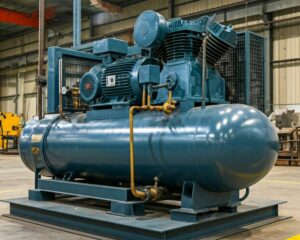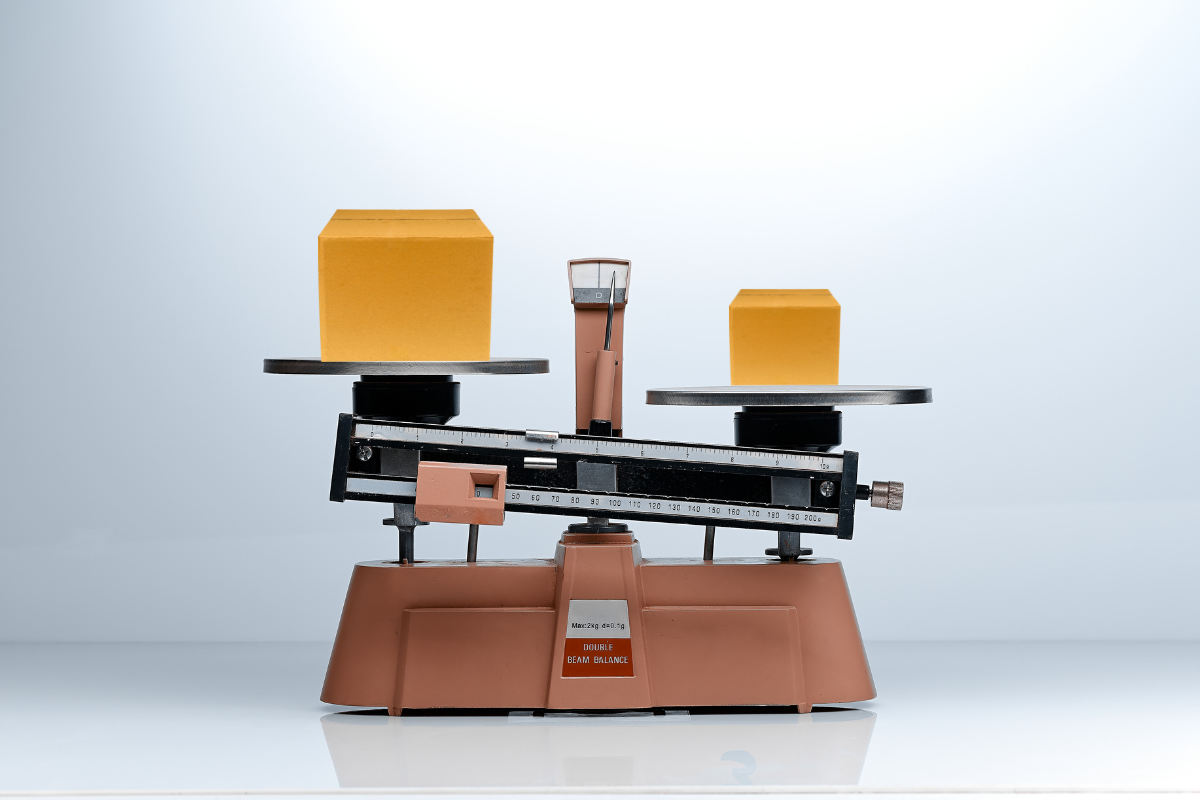The Less-Than-Truckload (LTL) shipping industry is going through a major change. On July 19, 2025, the National Motor Freight Traffic Association (NMFTA) launched a new density-based rating system, known as Docket 2025-1. This update replaces the old freight class system, which has been in place for over 70 years. Here’s what you need to know.
The Old Freight Class System
The traditional system used four main factors to classify freight:
- Density: How heavy the shipment is compared to its size.
- Stowability: How well the freight fits into a trailer.
- Handling: How easy or hard it is to move the freight.
- Liability: The risk of damage, theft, or loss.
Freight was then assigned to one of 18 classes (from Class 50 to Class 500), with pricing based on these categories. For example:
- Class 50: Dense items like steel rods.
- Class 150: Medium density items like books.
- Class 500: Light and bulky items like ping-pong balls.
But the system had issues. It was complex, outdated, and often caused pricing disputes between shippers and carriers. Shippers often under-classified freight to save on costs, while carriers frequently reclassified shipments, leading to higher charges and administrative headaches. The system relied heavily on subjective assessments, making consistency a challenge across the industry.
The New Density-Based System
The new system focuses mostly on one key metric: density (weight divided by volume). Here are the main changes:
- 13 Density Tiers: The old 18 classes are replaced with 13 density-based tiers. Each tier matches a specific weight-per-cubic-foot range.
- Simplified Codes: Many of the 2,000+ NMFC codes are being consolidated. Most shipments will now be classified by density alone.
- Tech-Driven: New dimensioning tools like laser scanners and 3D systems help measure freight more accurately.
- Objective Classification: Classification is now more data-driven and less prone to disputes, resulting in fewer surprises in billing.
Why This Matters
This update is about more than just numbers. It brings a much-needed modernization to LTL shipping and benefits both shippers and carriers:
- Fewer Disputes: Clearer rules and automated tech mean fewer classification errors. Disputes over freight class were one of the biggest pain points under the old system.
- Fair Pricing: Rates are better aligned with actual trailer space used. Shippers who optimize packaging for density may benefit from lower rates.
- Modernized Process: The new model fits better with today’s logistics tools and systems, making integrations easier for TMS, ERP, and warehouse software.
Understanding the 13 Density Tiers
Each density tier represents a range of pounds per cubic foot (PCF), and each tier maps to a freight class for pricing. Here’s a simplified breakdown:
- Class 50: 50+ PCF
- Class 60: 30–49.99 PCF
- Class 70: 15–29.99 PCF
- Class 85: 12–14.99 PCF
- Class 100: 10–11.99 PCF
- Class 125: 8–9.99 PCF
- Class 150: 6–7.99 PCF
- Class 175: 5–5.99 PCF
- Class 200: 4–4.99 PCF
- Class 250: 3–3.99 PCF
- Class 300: 2–2.99 PCF
- Class 400: 1–1.99 PCF
- Class 500: Less than 1 PCF
The goal is to create a more logical, fair system where you pay based on how much space your freight actually takes up.
Real-World Examples
Furniture Shipment
A pallet of furniture weighing 600 pounds and taking up 53.28 cubic feet has a density of 11.26 PCF. Under the new system, that puts it in Class 100.
Fragile Electronics
Let’s say you’re shipping 500 pounds of flat-screen monitors in 40 cubic feet. That gives you a density of 12.5 PCF (Class 85). However, because the items are fragile, a liability modifier may raise the class to 125, which increases the cost due to risk.
Oversized Machinery
A large industrial pump weighing 800 pounds and occupying 100 cubic feet has a density of 8 PCF. Normally this would place it in Class 125. However, if it’s oversized or doesn’t stack well, a stowability modifier may push it to Class 175 or higher.
Hazardous Chemicals
If you’re shipping flammable liquids that weigh 600 pounds in 12 cubic feet (density = 50 PCF), the base class is 50. But due to hazardous materials regulations, it might be rated as Class 100 or higher to reflect additional safety and compliance requirements.
Special Modifiers Still Apply
While most freight is classified by density, some items still require special codes. These exceptions are fewer, but they remain important for accurate billing and safety:
- Handling Needs: Items needing cranes or forklifts may get a handling modifier.
- Stowability Issues: Oversized or non-stackable items reduce trailer efficiency.
- Liability Factors: Fragile, high-value, or perishable goods carry higher risk.
- Hazardous Materials: Items that require special permits and labeling.
These modifiers are applied using additional identifiers in the NMFC system, ensuring shipments are priced based on both their physical footprint and special requirements.
Technology is the Key Enabler
The rollout of this system would not be possible without advancements in technology:
- Laser-Based Dimensioners: Instantly measure packages in 3D.
- 3D Imaging Systems: Provide detailed freight visuals.
- Automated Pallet Scanners: Collect volume data and weight simultaneously.
By using these technologies, carriers and shippers can easily determine the density and class without guesswork. The result is more transparency and consistency across the supply chain.
What Shippers Need to Do
- Update Internal Systems: Ensure your TMS, WMS, and ERP platforms are ready to handle the new classification structure.
- Train Your Team: Operations, shipping, and accounting teams need to understand how the new system works and how it affects pricing.
- Invest in Tools: Dimensioning and weighing tools are essential for accurate density calculations.
- Review Packaging: Look for ways to increase density and reduce your freight class for cost savings.
Benefits and Considerations
Pros:
- Simpler classification with fewer subjective decisions
- Fewer disputes over freight classes and charges
- Better alignment between freight cost and space usage
- Incentives to improve packaging and maximize trailer space
Cons:
- Bulky, lightweight freight may see cost increases
- Some businesses may need to invest in new tools
- Legacy systems may require expensive upgrades
Industry-Wide Impact
This shift could change how shippers and carriers negotiate pricing and how 3PLs provide value-added services. Carriers may benefit from improved trailer utilization. Shippers who understand the system and optimize their packaging may gain a competitive edge.
Over time, expect greater standardization and less confusion when quoting LTL shipments. It’s a win for supply chain transparency.
Learn more about NMFTA’s Docket 2025-1 and the updated classification guidelines directly from the source.
Final Thoughts
The NMFTA’s new density-based rating system is a big step forward for LTL shipping. By focusing on density, it offers a fairer, more accurate, and tech-ready approach to freight classification. Shippers who adapt quickly can reduce costs and avoid disputes.
This change marks a significant evolution in the way freight is measured and priced. Embracing it now can position your business for long-term success in a more streamlined logistics environment.
Need help navigating the LTL transition? TOP Worldwide can help you optimize your freight strategy and stay ahead of the curve. Contact us today to get started.
 Jeff Berlin
Jeff Berlin
is the Chief Operating Officer of E.L. Hollingsworth & Co. and serves as the Senior Operations Executive for TOP Worldwide and Native American Logistics. With over 30 years of experience leading logistics and trucking companies, he brings deep industry expertise to his role. Jeff is also a CDL-A driver and a private pilot. Contact Jeff at jberlin@elhc.net.


